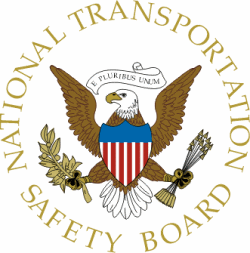Modified Maneuver Resulted In Controlled Flight Into Terrain
The NTSB has released its probable cause report from a June 22, 2013 accident at the Dayton Air Show that resulted in the fatal injury of pilot Charles Schwenker wing walker Jane Wicker.

According to the report, a video study using five videos taken of the accident sequence by airshow spectators revealed that, during the wing-walking performance, the airplane began a shallow climb to reposition for the next performance maneuver. After the airplane was aligned along the show line, the airplane began a left roll to the inverted position and continued rolling until it was nearly inverted, but it stopped at an orientation of 156 degrees of rotation (24 degrees short of fully inverted flight).
During the last seconds of the flight, the airplane's flightpath shifted from the east to the east-northeast, which directed it outside of the performance area and toward a Boeing 757 parked near aircraft hangars about 0.3 mile east-southeast of the accident site. About 1.3 seconds before the accident, the airplane began rolling right and then abruptly pitched toward the ground just before impact. During the final 2 seconds, the airplane's groundspeed reduced from about 106 to 84 knots. An examination of the airplane's wreckage did not reveal any preimpact anomalies that would have precluded normal operation.
An airshow crewmember reported hearing the wing walker telling the pilot before the airshow performance that he had previously flown too fast when she was walking along the wing to position herself. It is unknown if they further discussed the exact needs of the wing walker during the performance. However, it is likely that the pilot flew a more gradual maneuver to reduce the forces against the wing walker while she repositioned herself on the wing, which resulted in the entry into the maneuver not being set up as expected and created a tighter turn radius. On the videos, the airplane appeared to be flying slower than normal and did not pitch to the target nose-high parameter before beginning the left roll.
The airplane developed a negative, or descending, vector as the airplane rolled toward the inverted position. The roll to the inverted position was stopped short of expected; because of the bank, the airplane was heading toward the crowd line. The airplane flew for a few seconds while partially inverted and well below the maneuver’s 110-mph target airspeed. The airplane then began a right roll, although the planned maneuver typically used a left roll. It could not be determined if the pilot chose to discontinue the maneuver and exit with a reversed right turn to avoid a perceived collision hazard with the parked Boeing 757, to remain within the performance area, to not overfly the crowd, or a combination of these factors.
The NTSB determined the probable cause(s) of this accident to be the pilot's controlled flight into terrain. Contributing to the accident was the pilot's modified airshow maneuver, which placed the airplane at low altitude and airspeed and out of position within the performance area.
 NTSB Final Report: Rutan Long-EZ
NTSB Final Report: Rutan Long-EZ ANN FAQ: Turn On Post Notifications
ANN FAQ: Turn On Post Notifications Classic Aero-TV: ICAS Perspectives - Advice for New Air Show Performers
Classic Aero-TV: ICAS Perspectives - Advice for New Air Show Performers ANN's Daily Aero-Linx (06.28.25)
ANN's Daily Aero-Linx (06.28.25) Aero-News: Quote of the Day (06.28.25)
Aero-News: Quote of the Day (06.28.25)



